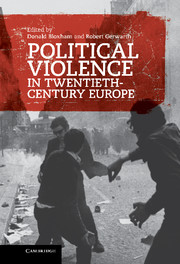5 - Terrorism and the state
Published online by Cambridge University Press: 05 June 2012
Summary
Introduction
Any chapter that confronts the subject of terrorism immediately encounters problems of definition. Thus, acts of violence that come under the label ‘terrorism’ are not easy to study. Some heuristic clarifications on defining terrorism are provided by the sociologist Peter Waldmann and the political scientist Louise Richardson. Together, their key defining elements leave us with the following insight: terrorism is a specific form of violence carried out by sub-state groups which plan and execute their politically motivated violent actions from a semi-legal or illegal milieu against civilians and against state institutions. The choice of victims and the type of terrorist act are of symbolic importance and aim to spread insecurity and win sympathy. Applying the terrorist label to violent acts is a means of delegitimizing social movements and political groups and is routinely used by states. Beginning in the second half of the nineteenth century, these labelling processes became a powerful instrument in political life to deny the legitimacy of violent protests and to maintain and strengthen the modern state's monopoly of legitimate violence. Employing the terrorist label facilitates the isolation, social exclusion and persecution of oppositional groups. In this discriminatory discourse, the state and the media may create ‘moral panics’. At the same time, this use of the term conceals the fact that the state – in the past as well as in the present – may act in a similar way to ‘terrorists’.
- Type
- Chapter
- Information
- Political Violence in Twentieth-Century Europe , pp. 176 - 209Publisher: Cambridge University PressPrint publication year: 2011
- 3
- Cited by



